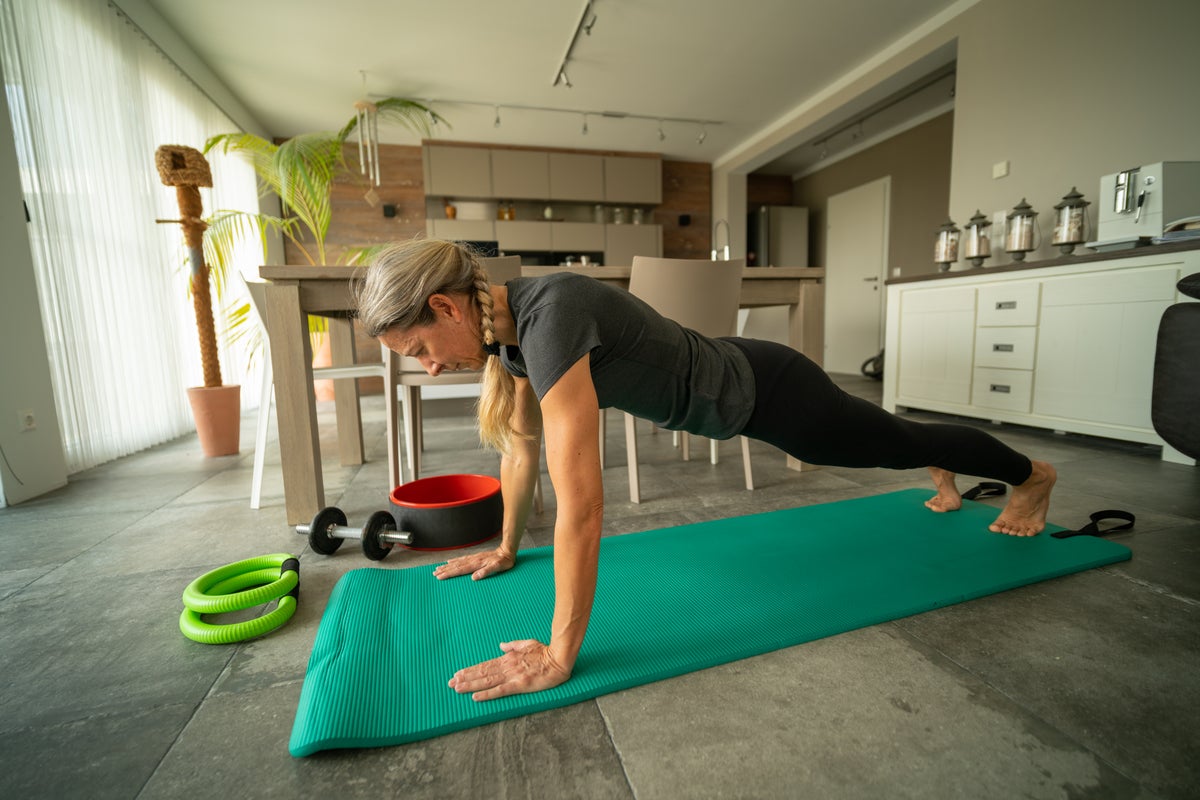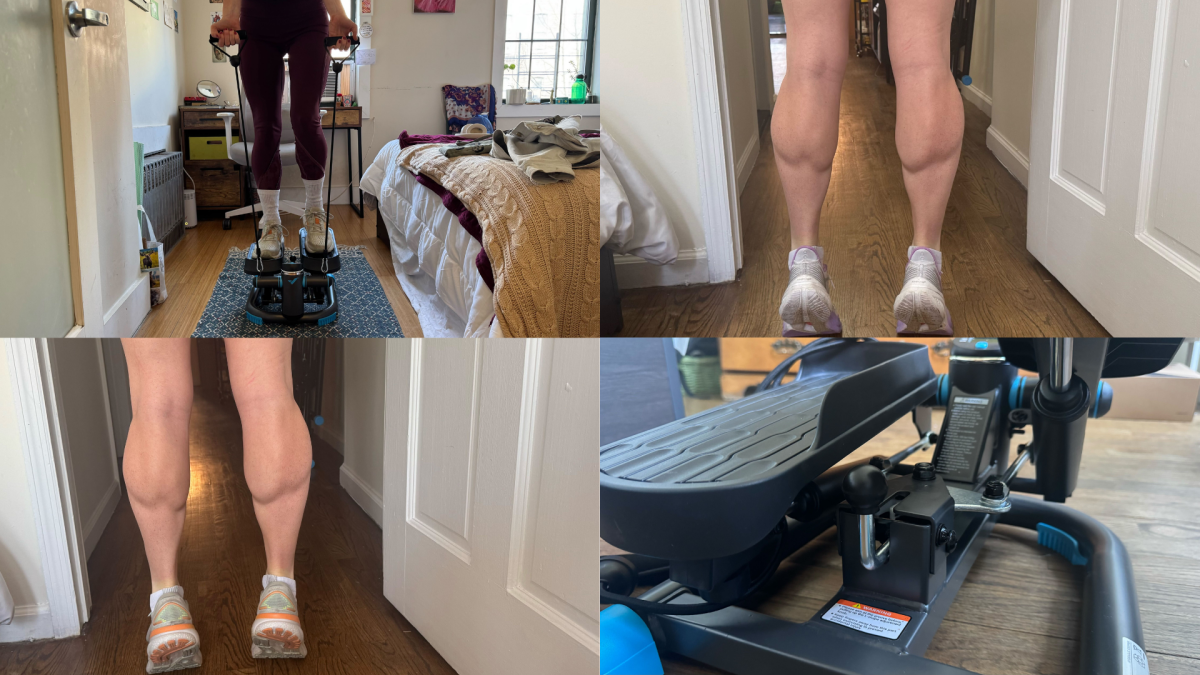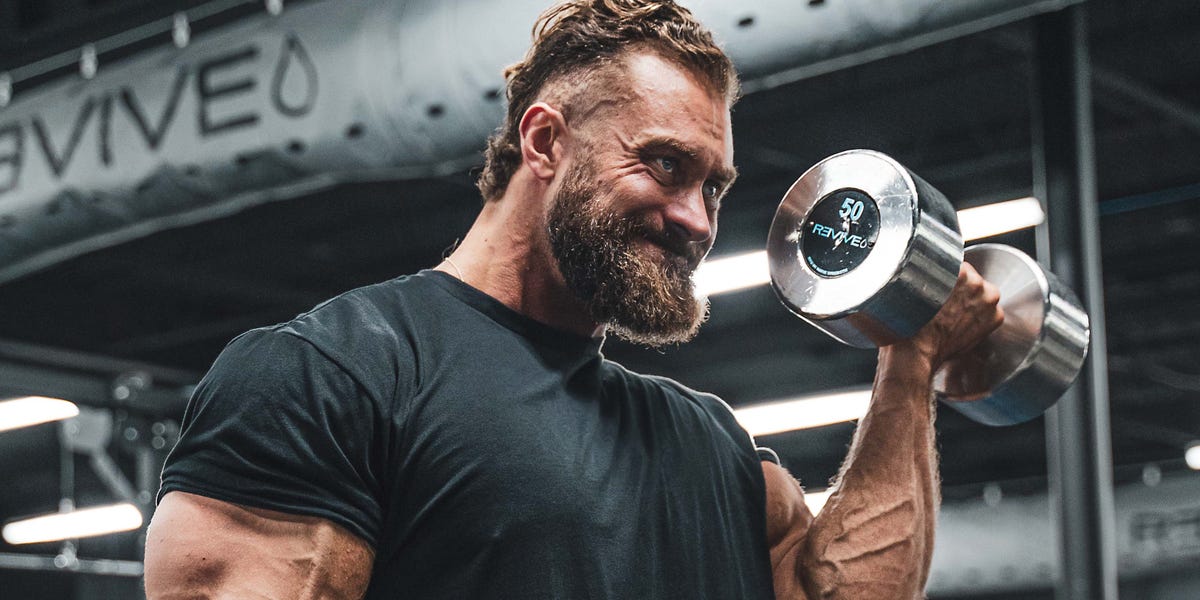In the fitness world, if something sounds too good to be true, it usually is. The advice below can be viewed as one of a select few exceptions.
Completing just two time-efficient strength training sessions per week – taking roughly 1 per cent of the 168 hours on offer – will provide the stimulus most people need to make life-changing improvements to their health, fitness and physical capacity.
This is what experienced certified strength and conditioning coach Danny Matranga stresses to clients; and he has helped hundreds of them since he started working on gym floors as an 18-year-old. In fact, he adds, less is usually more for those newer to this type of training.
“From just two sessions of resistance training a week, you will have better blood sugar, better bone density, better cognition and better motor control,” Matranga says. “Physically, you’ll have more muscle, probably less body fat, and less pain in your joints. Aesthetically, you’ll probably look way better in your clothes – you’ll see areas like your arms, thighs, glutes and tummy start to change.
“That’s an amazing return from just a few hours per week; you are going to get the most unbelievable benefits from that first hour of exercise. [But after a point], with each additional hour, we get into what we call diminishing marginal returns.”
Below, he explains why this is the case and shares a sample dumbbell-only workout you can use to build full-body strength – among a plethora of other benefits.
Science says beginners shouldn’t train too much
“When people look at the fitness industry, they see people in incredible shape working out six or seven days per week and think, ‘Wow, that must be what I need to do,’” Matranga explains. “But for somebody who is currently doing nothing, or very little, you’re actually better off working out one to three times per week.”
The reason for this, in his words, is that “you’re only going to make progress equal to the amount of work you can recover from, and a new exerciser can’t recover from an advanced routine”.
Strength training provides the stimulus for positive physical adaptations; more muscle, less fat, increased physical capacity, better cognition, improved heart health, the list goes on. But these changes don’t happen during the workouts themselves – they happen in the time between sessions when you’re recovering.
Because the strength training stimulus is new to novice exercisers, any amount will act as a jolt to the system, and it doesn’t take much to trigger impressive results. But when you give your body more exercise than it can handle, which for fresh exercisers is usually a fairly low threshold, you will quickly hit a point of “diminishing marginal returns”.
In layman’s terms: your body will reach a point where it can no longer positively adapt to the volume of exercise you’re asking of it, leading to limited benefits relative to the extra time you’re putting in. Less really is more, and for newer exercisers, most of the magic lies in the first hour or two of work you do each week.
Of course, over time, consistent and progressive exercise can increase your work capacity – a term defined to me by endurance swimmer Ross Edgley as “your body’s ability to perform and positively tolerate training at a given intensity or duration”. When you start to spot evidence of this progress, you may want to consider upping your weekly training volume.
But work capacity takes time to develop, so for time-efficient training, two or three strength sessions per week (alongside some form of regular aerobic activity such as walking) offer optimal ROI for those in their first few years of lifting weights.
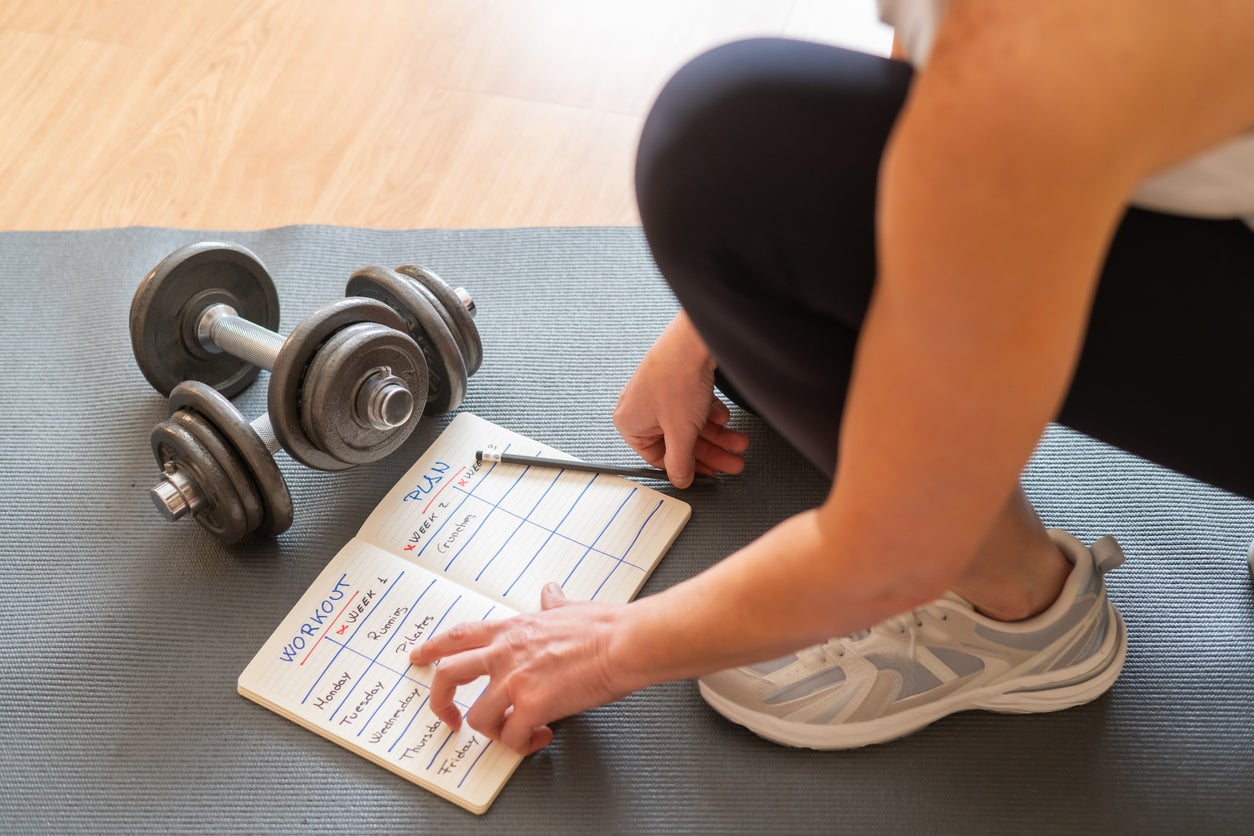
How to use this advice to improve your fitness
If you want to implement this advice, Matranga recommends starting with full-body workouts – sessions that recruit every major muscle group; the chest, back, shoulders, arms, legs and core – twice per week.
“When you’re a novice, you can go into the gym and do a pushing exercise and a pulling exercise for your upper body, something like a squat for the front of your legs, something like a deadlift for the back of your legs, and then you can walk away after four exercises having trained every single muscle in your body,” he says.
“The average person wants the most results from the least amount of time in the gym, and I respect that – the gym isn’t everybody’s happy place. If time is of the utmost importance and you want the most gains from the least number of trips to the gym, total body programmes are very effective.”
The gym isn’t a prerequisite for this plan of action either. Strength training involves using your muscles to overcome an external load, but as long as this load is challenging enough to stimulate the desired adaptations (more on this below), the body won’t mind whether it comes from resistance machines, dumbbells, barbells, kettlebells, resistance bands or even your own body weight.

Read more: We’ve overcomplicated fitness – these six simple things will make you healthier than most people
A sample full-body dumbbell workout
|
Exercise |
Sets |
Repetitions |
Rest between sets |
|
Goblet squat |
2-3 |
12-15 |
60 seconds |
|
Romanian deadlift |
2-3 |
12-15 |
60 seconds |
|
Dumbbell overhead press or press-up |
2-3 |
12-15 |
60 seconds |
|
Single-arm dumbbell row |
2-3 |
12-15 |
60 seconds |
All you need to complete this session is a pair of dumbbells, and you can use it twice per week as your strength training workouts – if you do, complete the dumbbell overhead press in one session and the press-up in the other to bias the shoulders and chest muscles respectively.
You can also do it at the gym, in your living room or at the park – your muscles don’t care where you are, just that you’re giving them a good workout.
The common denominator behind an effective strength-boosting, muscle-building, joint-bolstering session is something called mechanical tension. To achieve this, you need to ensure the target muscles are working hard enough during each set to achieve the stimulus needed for positive adaptations.
A good way to check for this is, by your last two or three reps, your form should remain immaculate but your movements should be involuntarily slowing down due to the accumulated fatigue in the muscles. If the last couple of reps feel easy, the exercise wasn’t challenging enough.
This is why Matranga prescribes a goal of 12-15 repetitions, rather than giving you an exact number to gun for – stop when you can’t complete another rep with perfect form, rather than hitting the breaks when you reach the listed rep target.
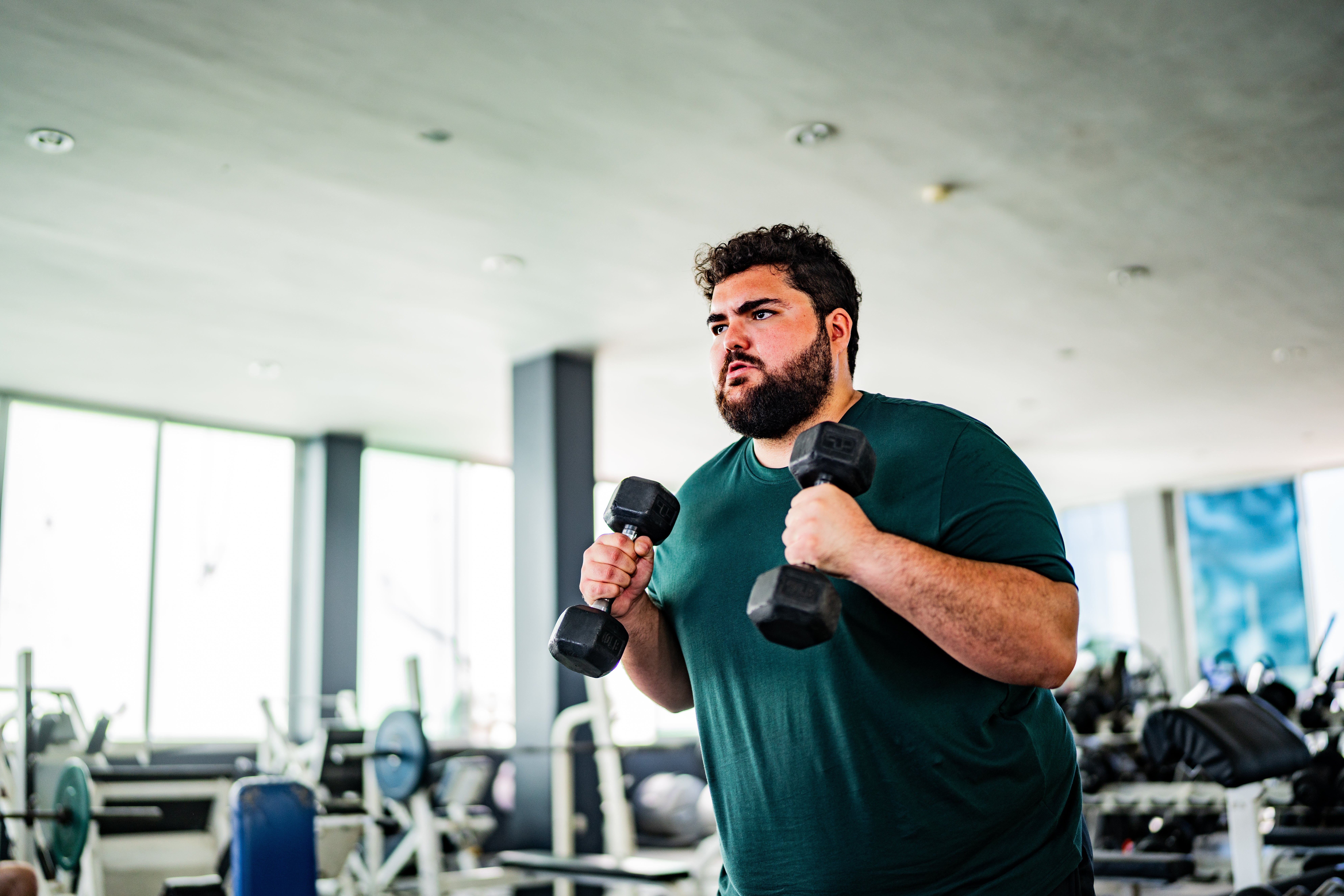
If you don’t have access to dumbbells heavy enough to feel challenging for 12-15 reps, Matranga advises completing the exercises non-stop for a set amount of time (such as 30 or 60 seconds) or continuing until you feel “it burning in the target muscle” instead.
However, a rep goal of 12-15 per set is his favourite for beginner lifters. This is because a higher target number of reps allows you to challenge yourself with lighter weights, while also practising the movement more times – lifting weights is a skill, after all, like any physical activity.
“In golf, if you wanted to learn how to swing the driver, you wouldn’t go to the driving range, swing it one time as hard as you can and then leave,” Matranga explains. “You would take a bunch of swings, and after a lot of practice, you would eventually start hitting the ball straight.
“For new lifters, I like aiming for 12 to 15 reps because you use less weight, which allows you to practise and rehearse the form while still getting close to failure. Sometimes you get a little bit of an aerobic benefit from a little more reps too, and let’s be honest, most people could use a cardiovascular benefit from their exercise.”
When you become more comfortable with an exercise and fine-tune your technique, you can then start increasing the weight you’re lifting and lowering the target number of repetitions to increase strength, Matranga adds.
10-second takeaways
- Two weekly strength training workouts per week is enough to trigger impressive results in beginners, including improved strength, joint health, mobility, heart health, body composition and cognition.
- Beginners will enjoy maximal return on investment from fewer workouts as they need less of a stimulus to trigger positive adaptations, and they are unable to positively tolerate advanced exercise routines.
- Full-body workouts are the most time-efficient option as they allow you to train each major muscle group (those of the chest, back, shoulders, arms, legs and core) more frequently.
- An example of an efficient dumbbell-only full-body workout is the goblet squat, dumbbell Romanian deadlift, dumbbell overhead press and single-arm dumbbell bent-over row, each performed for two to three sets of 12 to 15 repetitions, with 60 seconds of rest between each set.

